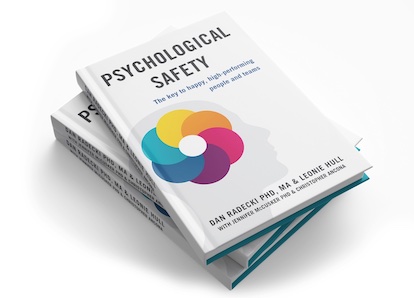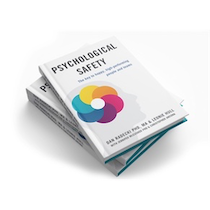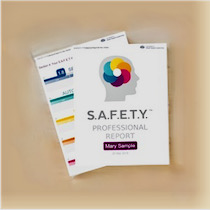Employers and supervisors in today’s workforce must ensure their team members feel safe. Whether they’re our top performer or a low earner, if their position is important enough to be created, that team member is important enough to retain. Today’s workforce is different than previous workforces. Data coming out of the Great Resignation phenomenon has revealed that employers who are meeting their team’s psychological needs are faring much better at retaining their staff.
Record numbers of workers are quitting their jobs. To retain workers employers offer good benefits, competitive wages and flexible hours, but the most crucial component of retaining a workforce isn’t any of these factors. The most valuable thing an employer can offer today’s workforce is a healthy culture with a foundation of psychological safety. This dynamic has been extensively researched and it’s undeniable. Research has shown that psychological safety is the most important factor in how teams work together and how likely they are to be satisfied with their positions.
Neuroscience, biology, psychology, endocrinology and other sciences are all pointing to one important realization. Interestingly, Maslow’s hierarchy of needs ranks the need for safety, autonomy, esteem and belonging after physiological needs, yet research now shows that these needs exist within people even before their basic physical needs are met. People will seek psychological safety even in the absence of their basic physiological safety needs being met.
Drivers of Psychological S.A.F.E.T.Y.™
Research has shown us six important areas of psychological safety that different people’s brains have different sensitivities to triggers that fit into the acronym S.A.F.E.T.Y.™:
Security: The need for certainty, consistency, and no change.
Autonomy: The need to feel in control of our environment and decisions
Fairness: The need for just treatment
Esteem: The need to feel highly regarded in the social hierarchy
Trust: The need to belong to and protect our in-group
You: Your own triggers that come from your background, culture, and upbringing
The need to feel psychologically safe is a fundamental human need irrespective of demographic or socioeconomic factors. Research published by Harvard Business School in the 2018 Global Happiness Report showed that at all levels of income, the most important factor for determining job satisfaction had to do with Psychological Safety.
Psychological safety is an ‘every body’ priority
Traditionally, companies address the psychological safety needs of high-earning employees significantly more than they do the same needs of lower-earning employees, despite both levels being crucial for a well-functioning company, and despite the Great Resignation causing a critical need for workers to fill lower-earning positions.
As a society, when a lower-earning worker feels the weight of a lack of satisfaction at work, we’ve found that it can spill over into their personal lives. It can affect the attitude and outcomes of their children, it can affect their community. But even if employers are unconcerned with what’s best for society at large, it matters to the companies’ bottom line too. Frequently, the lower earners are the people who directly interact with clients.
Many don’t realize that client satisfaction is directly correlated to employee satisfaction. Employee disengagement and unhappiness is palpable to clients. Whether through obvious channels like direct venting on social media or through word of mouth, or through more subtle cues in the customer experience – like poor communication and substandard customer service.
Variables that employers think build teams – but don’t!
Many employers have an instinct that their team members’ psychological safety is important. They try things like consensus-driven decision making, altering workload size, and having people sit together in the same office. The truth is though, none of these things are significantly important to the effectiveness of a team. In the same way that higher pay and flexible hours are less important than psychological safety, the act of ‘sitting together’ does not equate to a stronger more connected team. In fact, if team members value and prioritize different S.A.F.E.T.Y.™ drivers, putting them all into a room with no S.A.F.E.T.Y.™ accommodations can simply lead to conflict, unhappiness, and lower productivity. This gets written off as interpersonal conflict or clashing personalities and the level of discomfort continues until someone quits.
The first steps to transforming a workplace
This can all seem overwhelming to an employer or team leader who is stretched and doing all they can to create and maintain a healthy workplace environment. But by breaking the traditional leadership patterns that no longer work and equipping leaders with the skills and tools to nurture team Psychological Safety, and by improving team productivity and connection through Team Safety Training, companies are able to harness the knowledge of neuroscience to build a thriving workplace culture.













